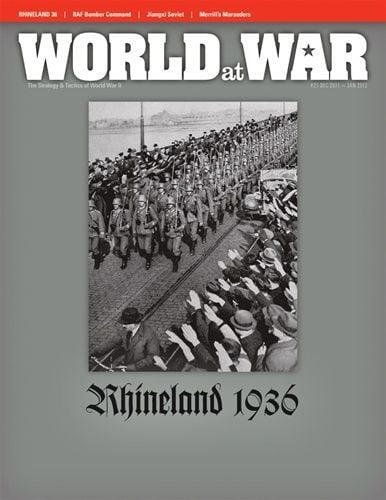The Rhineland War, 1936-37 (2011) Board Game
The Rhineland War, 1936-37 board game is set during a hypothetical conflict that could have erupted between France and Germany in the mid-1930s. The game explores the strategic decisions and military operations that could have occurred during this time period, offering players a glimpse into what might have been.
Game Components of The Rhineland War, 1936-37
How To Setup The Rhineland War, 1936-37
Setup involves placing unit counters on the map according to the scenario being played, shuffling and dealing event cards, and each player setting up their player aids. The game map is laid out to reflect the geopolitical situation of the Rhineland in 1936. Players must carefully read the scenario rules to ensure accurate placement of units and initial conditions.
Gameplay Mechanics and Game Objective
Player Experience
Playing The Rhineland War, 1936-37 offers a deep dive into strategic decision-making and historical context. Players must balance immediate tactical needs with long-term strategic goals, all while navigating the uncertainties introduced by event cards. The game is particularly engaging for those interested in World War II history and alternative scenarios, as it challenges players to think critically about the consequences of different actions.
Pros
Cons
Personal Thoughts on The Rhineland War, 1936-37
The Rhineland War, 1936-37 is ideal for wargamers and history enthusiasts who appreciate strategic depth and historical accuracy. It is particularly suited for solo players or those who enjoy playing against a single opponent. While it may not be the best fit for casual gamers due to its complexity, it offers a rich and rewarding experience for those willing to invest the time to learn and play it.
We are supported by our audience. When you purchase through links on our site, we may earn an affiliate commission, at no extra cost for you. Learn more.

